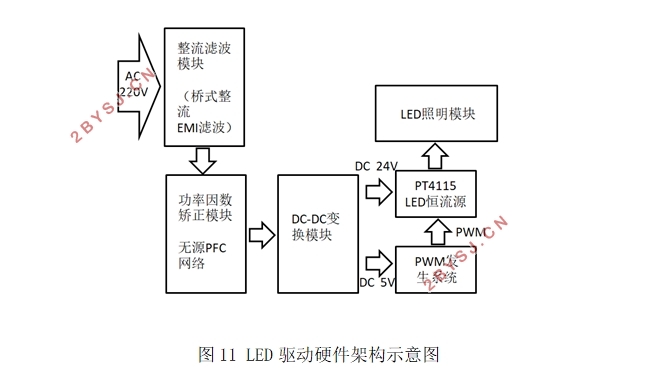一种可调均匀照明LED灯的设计
无需注册登录,支付后按照提示操作即可获取该资料.
一种可调均匀照明LED灯的设计(论文13000字)
摘要:为获得更好的LED台灯照明环境,选用开关电源技术设计LED驱动电源,在电源前级选用合适的EMI滤波模块以及无源功率因数矫正模块对谐波进行处理,选用PT4115芯片作为LED恒流源并接受以STC89C52为核心发出的PWM方波调制。在照明模块中,采用斯派罗法则,对 LED分布阵列进行优化。实验表明,当LED阵列与光照接受面距离为45.83cm时,能够获得较均匀的光照度,并在该距离前后5cm内也能够获得质量较好的光照度分布。EMI滤波模块与功率因数矫正模块也能较好地消除谐波。
关键词:LED;驱动电源;均匀照度
Desigh of an adjustable uniform lighting LED light
Abstract: To obtain better LED lamps’ lighting environment, this paper selects switching power supply to design LED driver. In this design, appropriate EMI filter module and passive power factor correction module were also chosen to process harmonics in the power supply. The PT4115 chip was selected as the LED constant current source. The PWM square wave which was generated by the microcontroller system choosing STC89C52 as its core was used to modulate the average current. In the lighting module, Sparrow law was used to optimize the LED array. Experiment shows, when the distance between the LED array and the light receiving surface is 45.83cm, we can receive best uniform illumination. There are also relatively good quality uniform illuminations within 5cm around the best distance. The EMI filter module and passive power factor correction module can also eliminate harmonics well.
Key words: LED; drive power; uniform illumination

目 录
1 绪论 1
1.1 选题背景及研究意义 1
1.2 国内外研究现状 1
1.2.1 国外的研究现状 2
1.2.2 国内的研究现状 2
2 LED驱动电源、单片机以及均匀光场相关理论与技术 2
2.1 LED工程应用相关理论 2
2.1.1 LED工作原理 2
2.1.2 LED驱动技术 4
2.2 开关电源相关理论 4
2.2.1 开关电源简介 4
2.2.2 AC-DC电路设计要点 6
2.3 单片机相关理论 7
2.4 PWM相关技术理论 8
2.5 斯派罗法则 8
3 LED驱动硬件架构设计 10
3.1 主电源电路模块设计 10
3.2 PT4115LED恒流驱动芯片 11
4 单片机PWM发生源软件设计 12
4.1 PWM驱动信号设计 12
4.2 LCD1602显示模块设计 13
4.3 按键模块设计 15
5 均匀照度照明模块设计 17
5.1 单颗LED参数测量 17
5.2 均匀照度模型实验 18
6 可调均匀照明LED灯测试及分析 23
6.1 测试环境 23
6.2 软件部分的测试 23
6.3 硬件部分的测试 24
7 总结与展望 26
参考文献 27
致谢 28
